Do you happen to have an excessive amount of fresh rhubarb on your hands? Or how about a glut ‘ready to pick’ harvest that you are not quite ready to utilize yet? If so, learn how to freeze your rhubarb most effectively and seamlessly.
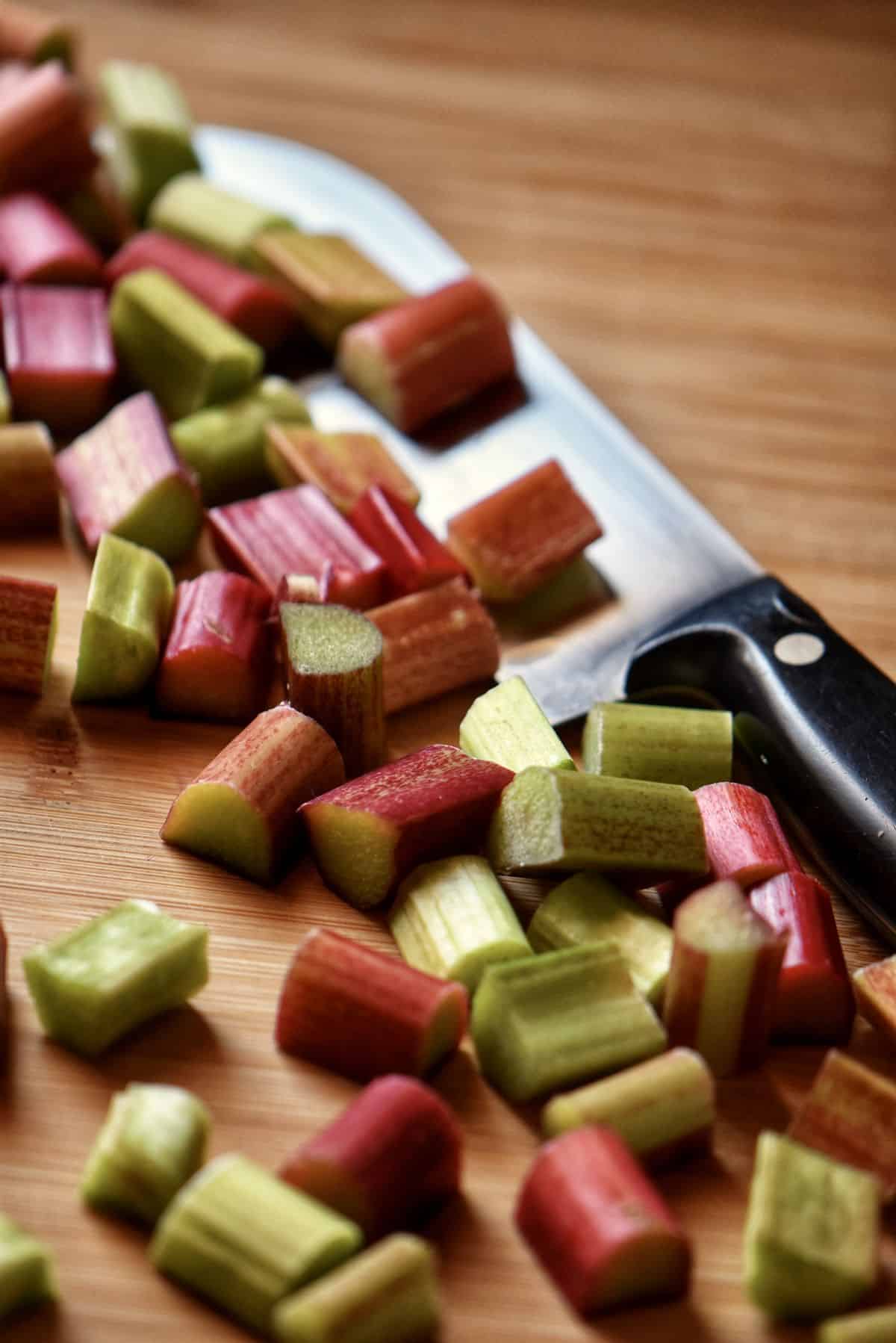
There is something quite exhilarating about picking perfect ‘ready to harvest’ rhubarb stalks from your garden and heading straight to the kitchen to whip up your favorite rhubarb recipes.
From rhubarb compote, puddings, cakes, jams, and muffins to everyone’s favorite tart dessert, strawberry rhubarb crostata!
Rhubarb, or pieplant, is a truly delectable (and healthy) vegetable used in many mouthwatering recipes.
This bright-colored green and red vegetable can easily be harvested from late spring into early summer.
But here’s the zinger; what if your bumper crop of rhubarb is ready to be harvested, but you are not ready to use it just yet?
If you ever find yourself in this unique and wonderful situation, don’t deem your rhubarb harvest doomed just yet! There is a key solution to solve this dilemma, and it’s called freezing your rhubarb!
Despite its short season, rhubarb is a wonderful preservative, and freezing rhubarb is the easiest and most effective way to get the most out of your bountiful harvest all year long.
Not only does freezing rhubarb help you reduce waste and maintain freshness, but it allows you to leverage this wonderful vegetable to make delicious tart desserts and savory dishes now or a year from now.
If you are ready to learn how to freeze rhubarb and reduce waste, look at these step-by-step directions.
Jump to:
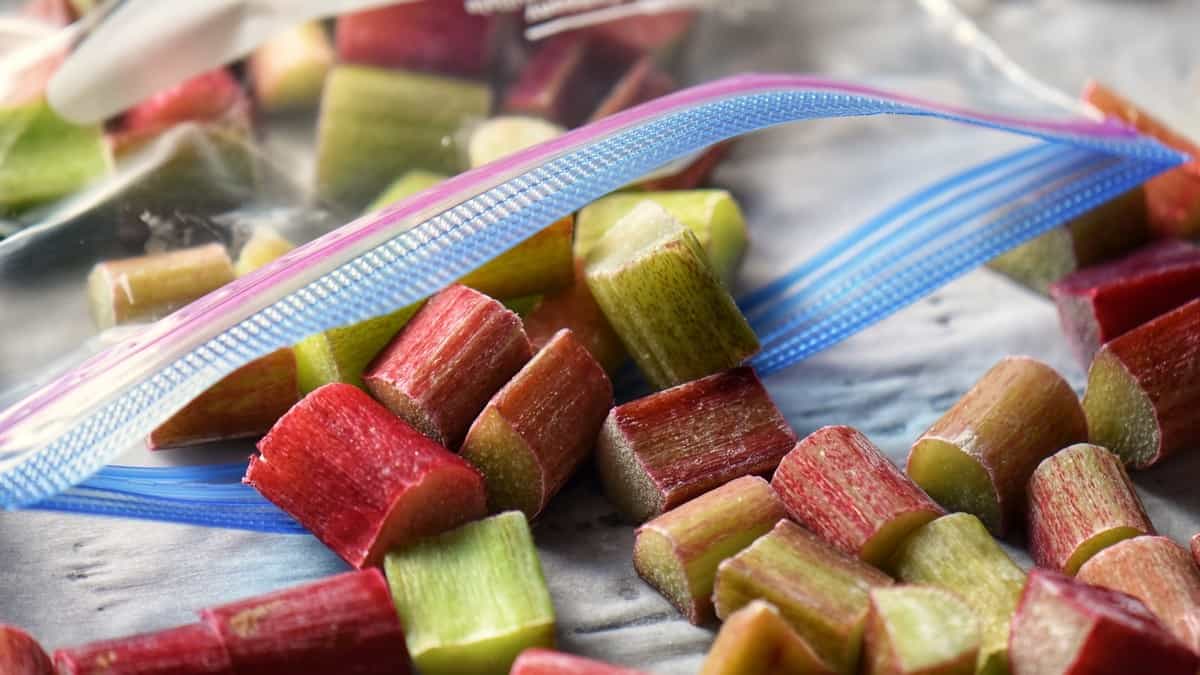
What you’ll need
- Rhubarb – as much as you’d like
- A sharp chef’s knife
- Freezer bags or freezer containers
- boiling water (optional for blanching)
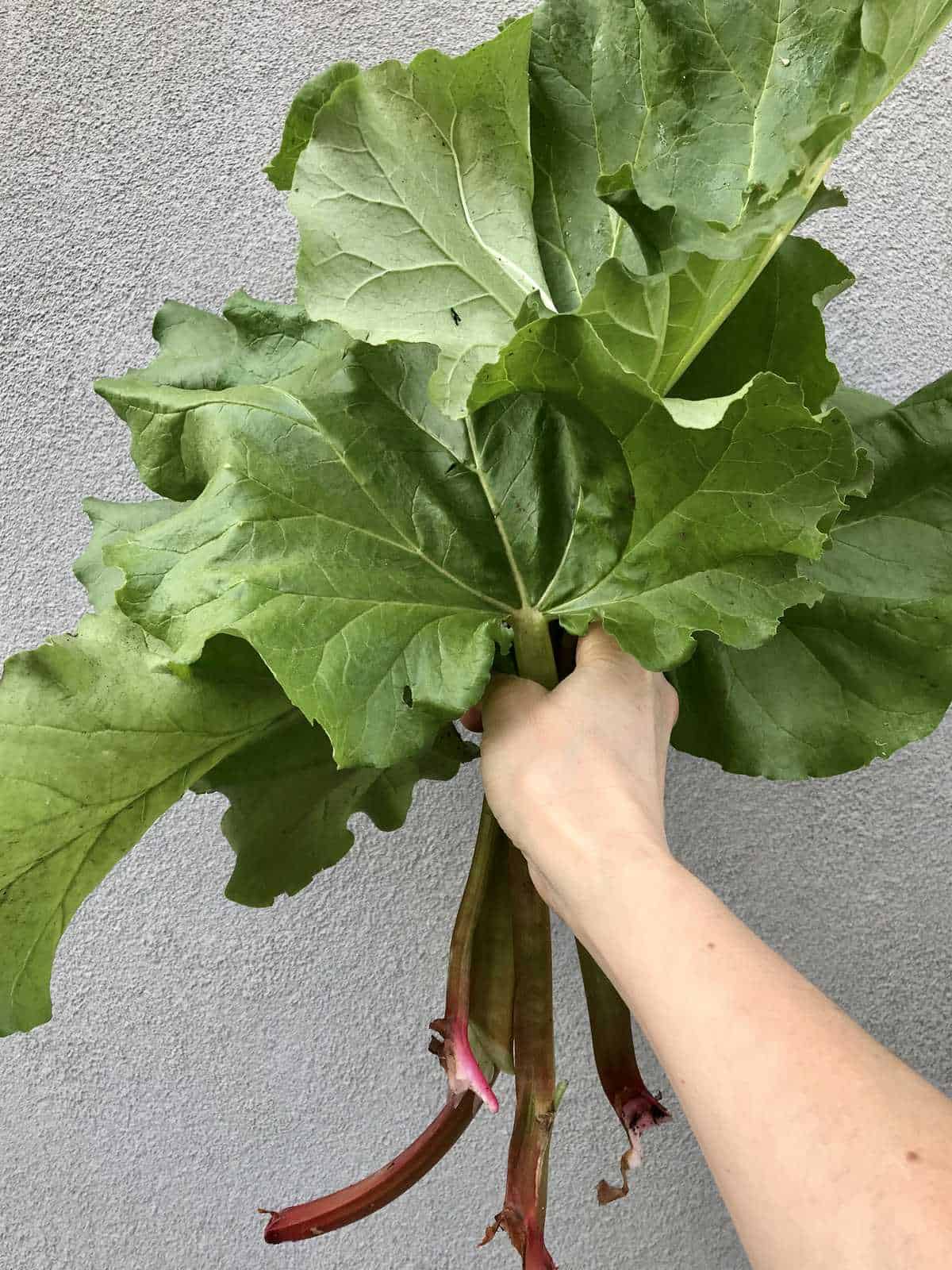
How to freeze fresh rhubarb: From harvesting to freezing to thawing
Harvesting
If you are new to the rhubarb harvesting game, you may have questions about when to pick your rhubarb.
Like asparagus, rhubarb is one of the first vegetables harvested, usually from mid-spring to early summer.
You can pick your stalks when they are about as thick as your finger and at least 8 inches long. Please make sure they are blemish-free. For reference, rhubarb tends to be the tastiest when closer to 12-18 inches long.
Make sure not to harvest your rhubarb in the first year of planting. As a young perennial plant, it still needs to develop a strong root system. Instead, wait for the second year and harvest just a few stalks over a 3-4-week period. By the third year, you can harvest as many mature stalks from your rhubarb plant as you’d like over a period of 8-10 weeks.
So now that you know when to harvest your rhubarb, here’s how to do it. First, grasp and twist the base of the rhubarb stalk with an upward movement. As a second option, you can use a sharp knife.
Although this tart vegetable is often used fresh, it freezes well. The best time of the year to freeze rhubarb is in peak season, either available at your farmer’s market, grocery stores, or freshly picked. This will ensure the flavor and texture of the rhubarb is at their maximum.
If purchasing, look for crisp, brightly colored stalks. Limp and soft stalks are an indication that they are not fresh.
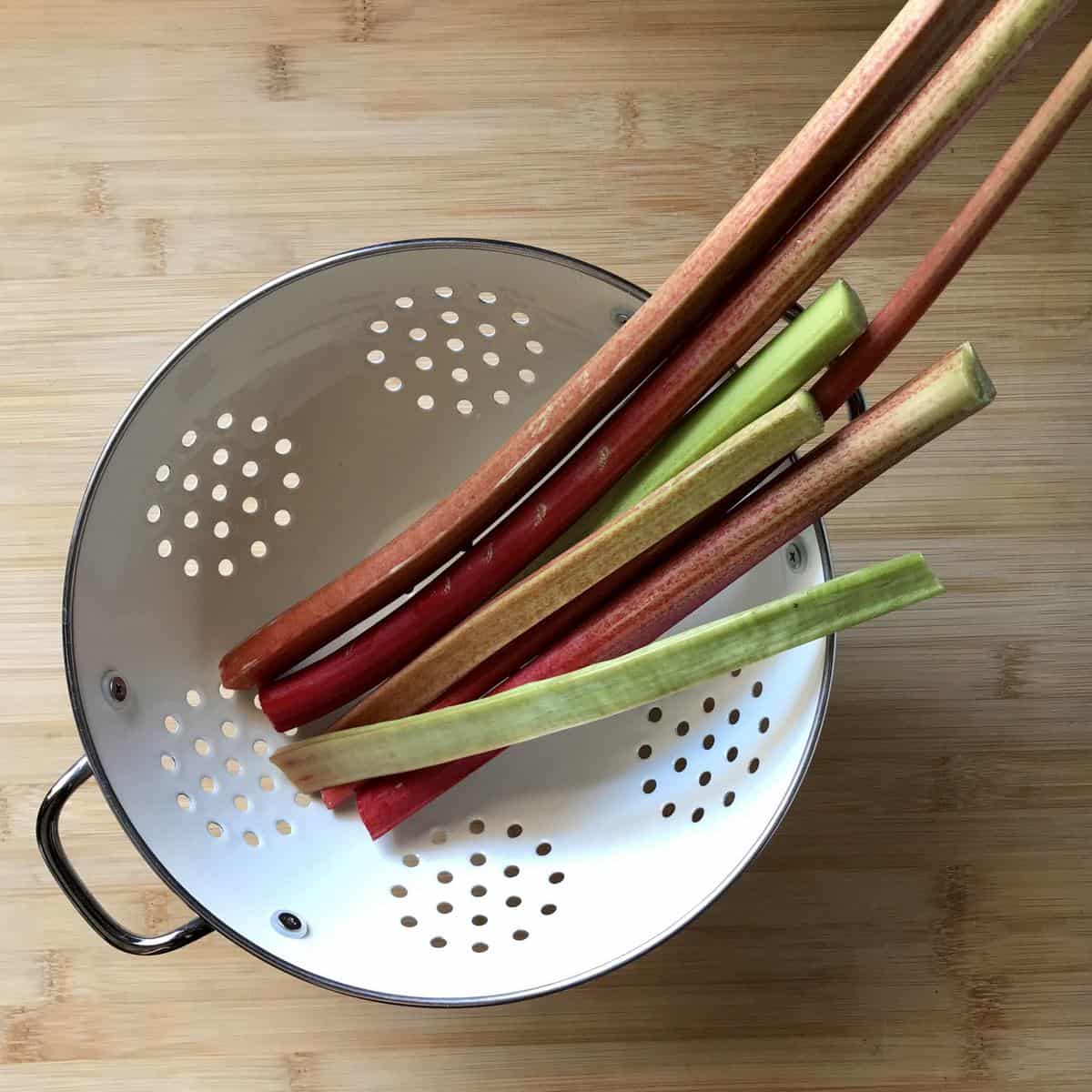
Prepping
Let’s say you have your supply all harvested and ready to be frozen. The next step towards freezing rhubarb is getting it prepped and ready.
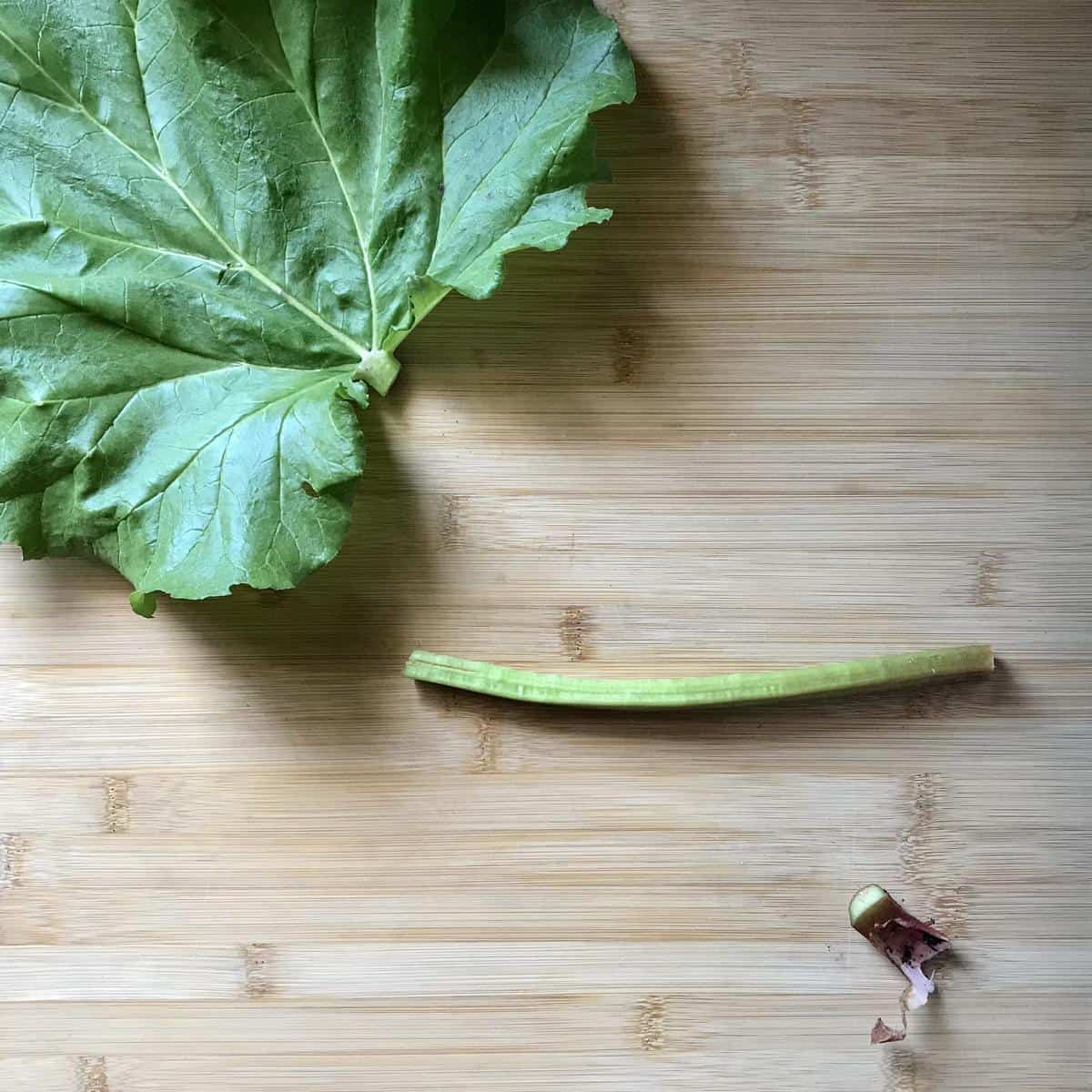
This includes cutting off the leaves and the bottom part of the stalks. Although the leaves are toxic to ingest, they are safe for your compost pile. [source]
Once done, thoroughly wash rhubarb stalks under cold running water.
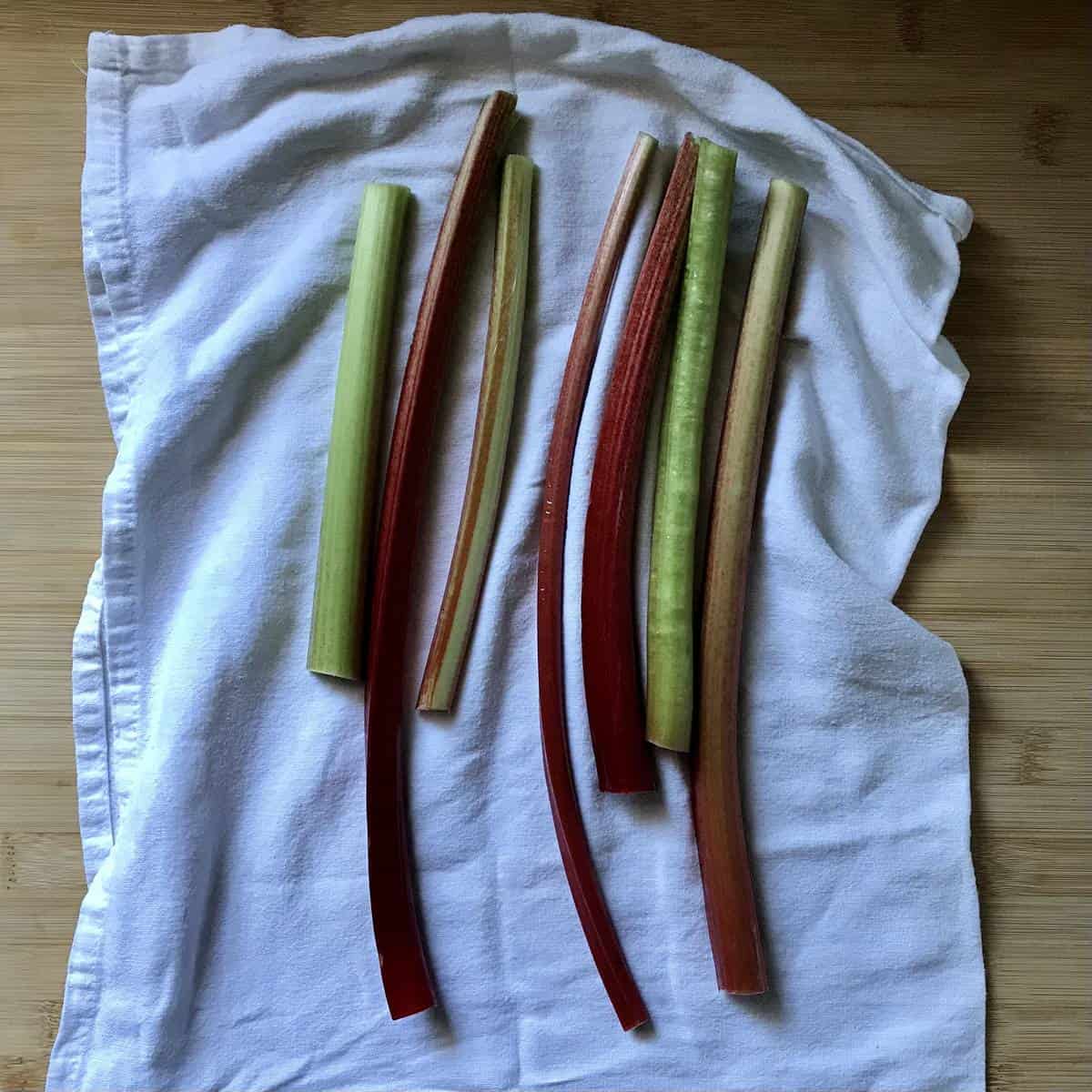
Place on a clean tea, lint-free tea towel and pat dry with paper towels or another clean tea towel.
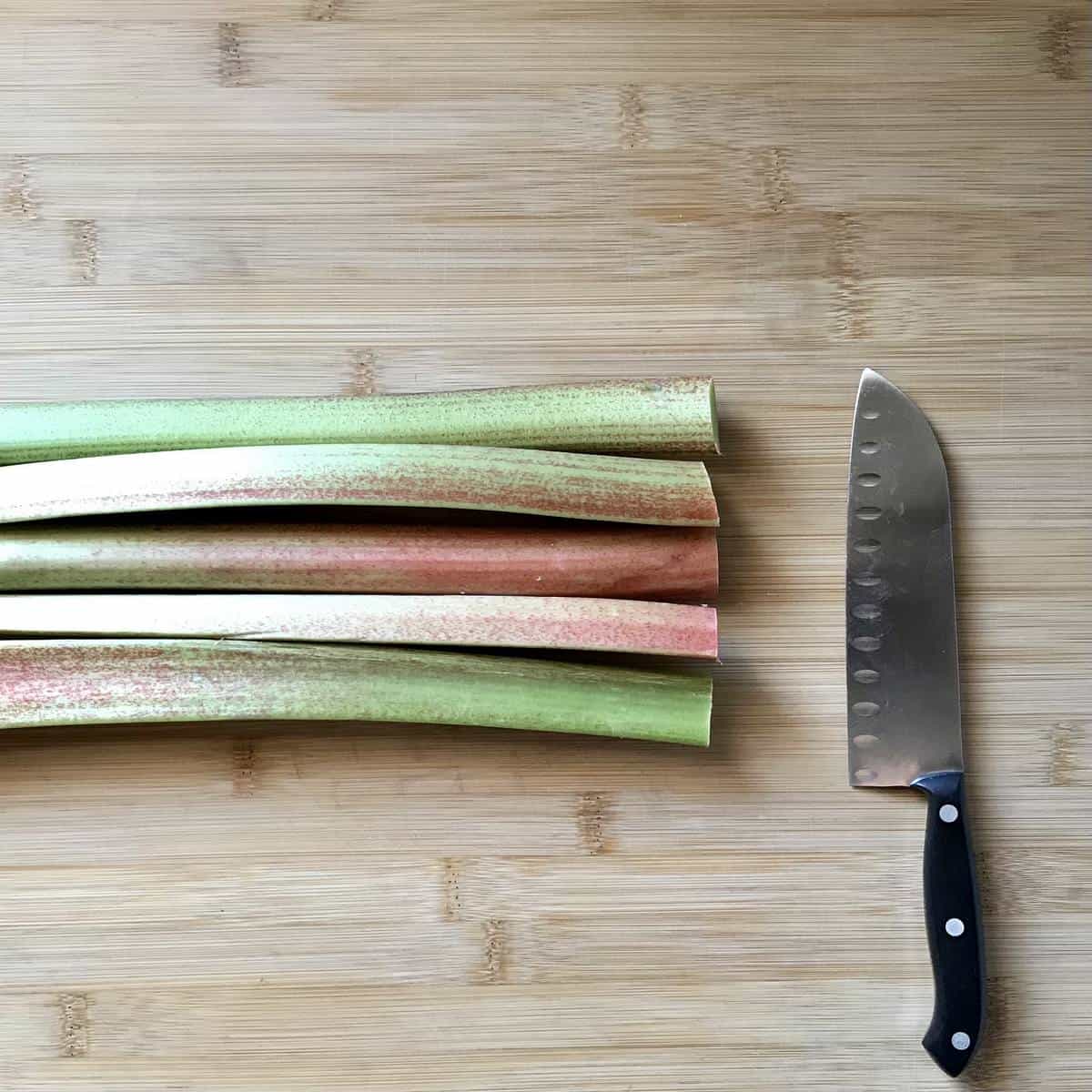
Line up your stalks, and with a very sharp knife, cut the stalks into ¾-1 inch pieces.
Blanching (optional step)
Blanching is a favored process that helps preserve the bright color of rhubarb and other vegetables before freezing. This is an entirely optional step but one to consider implementing if you plan to freeze your rhubarb longer than three months.
To do this, boil a pot of water and drop your cut raw rhubarb into it for one minute.
Once that minute is up, drain the boiling water immediately and run your rhubarb under cold water to stop it from cooking. After this, thoroughly dry your rhubarb before heading to the freezing phase.
Freezing
The last step in this how-to-freeze rhubarb guide is the freezing itself.
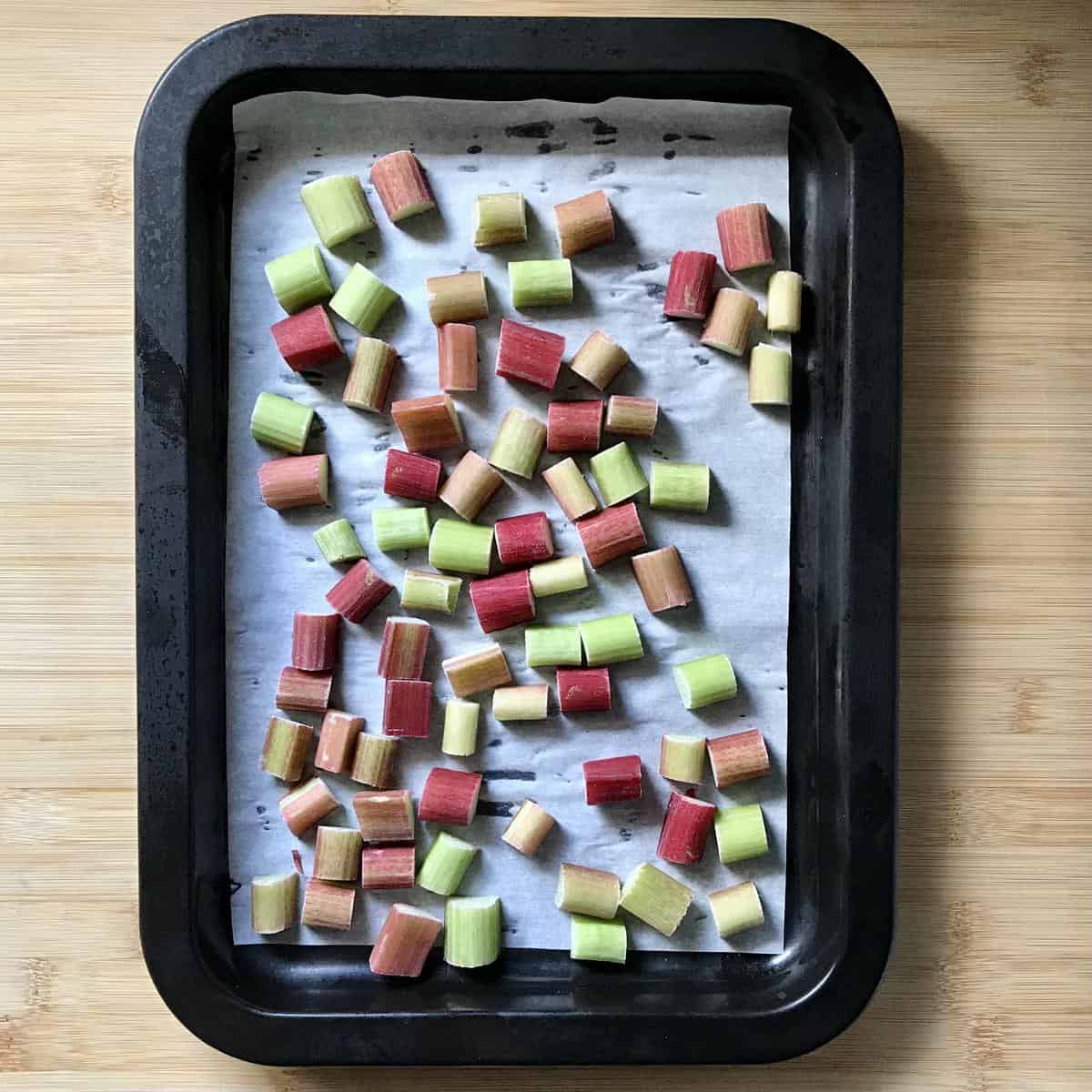
Arrange your rhubarb pieces in a single layer on a rimmed baking sheet or baking tray lined with parchment paper. Remember to use a baking sheet that fits in your freezer.
Place it in the freezer for about 2-3 hours.
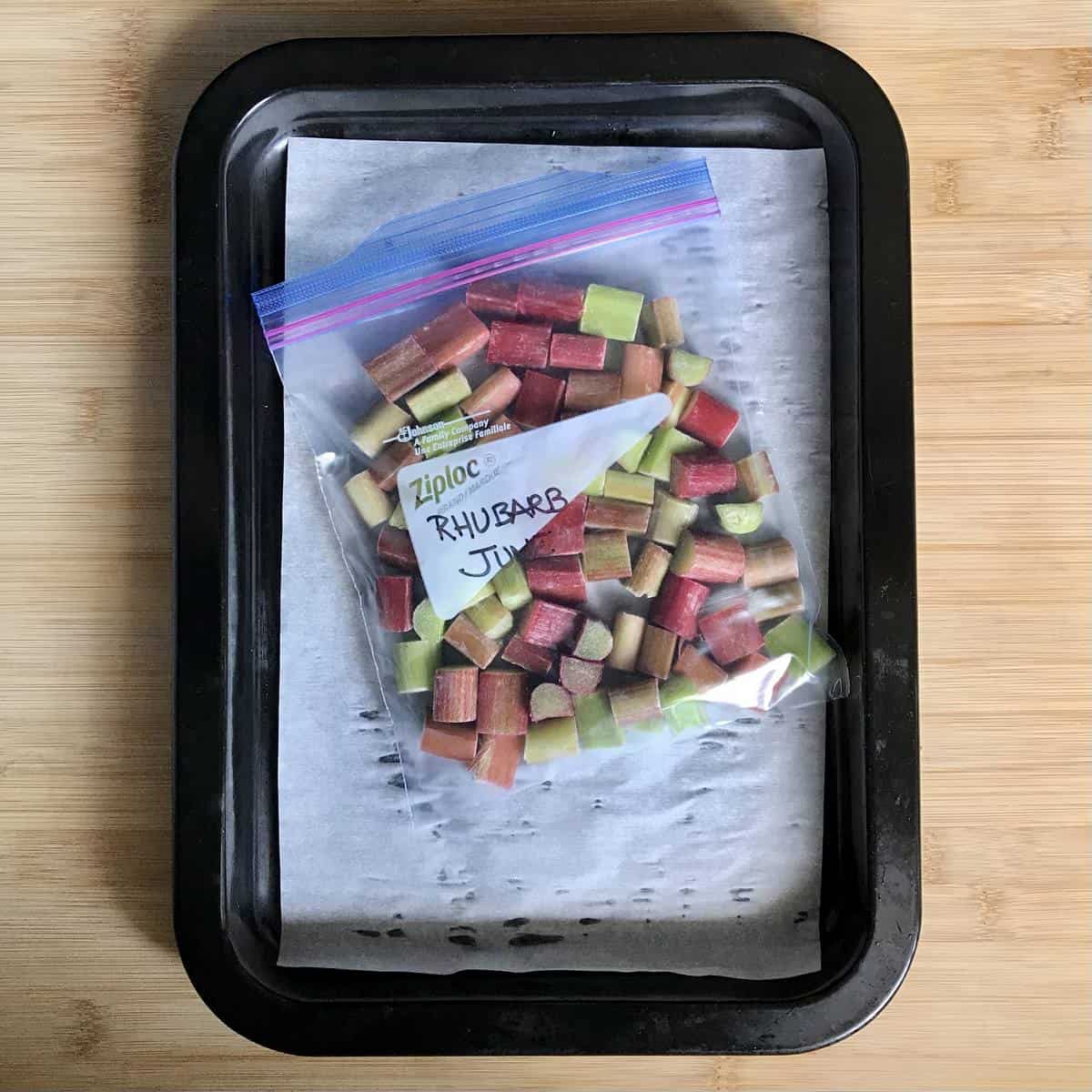
Transfer the individual partially frozen rhubarb to resealable freezer bags. Use a straw or a sealer to remove the excess air, which reduces the formation of ice crystals and freezer burn.
Label your bags by indicating the date and place them in the freezer.
Thawing
Congratulations! You successfully froze your rhubarb.
Now, depending on what you want to make with it, there are different methods of thawing it.
You can use the frozen pieces without thawing if you are cooking stewed rhubarb or making a rhubarb sauce. However, remember that you may have to reduce the amount of liquid used in the recipe to compensate for the high moisture content in the frozen rhubarb.
For best results, thawing rhubarb is strongly recommended for delicious recipes like rhubarb cake, muffins, bread, crumbles, etc.
Now, there are several ways you can do this.
The most common is to place your frozen rhubarb in a sieve over a bowl to collect the excess liquid. You can leave it covered overnight in the fridge or on your kitchen counter, at room temperature, for a couple of hours.
You can also place the bag in a bowl of cold water to quickly thaw. Follow up by placing the bag’s contents in a sieve over a bowl to collect the excess moisture.
Fun Fact: One pound of harvested rhubarb equals about three cups of chopped pieces, both raw and frozen. This same amount yields about two cups when cooked.
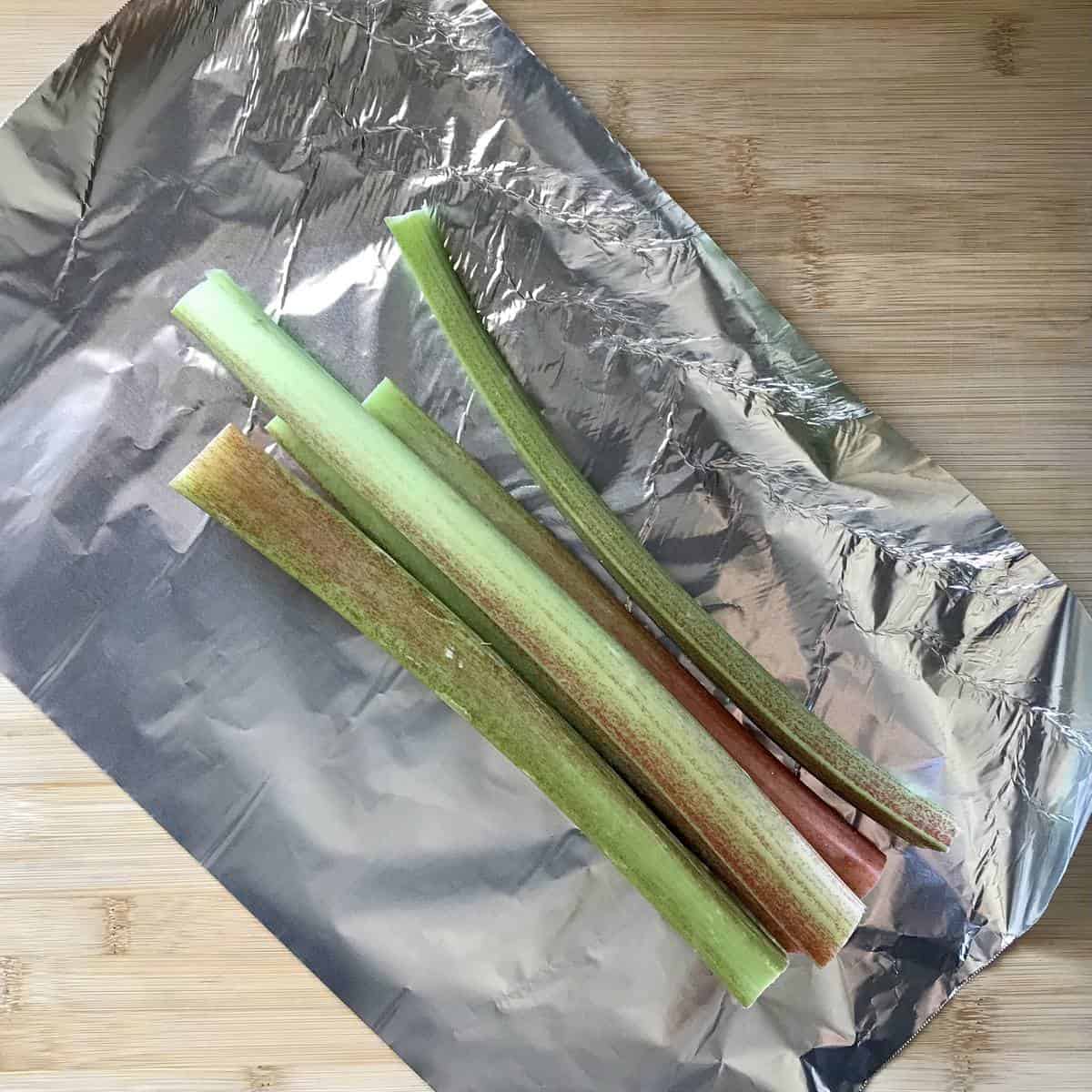
FAQ
The best procedure to store fresh rhubarb in the refrigerator is to wrap the stalks loosely in aluminum foil. This method maintains crisp stalks for up to 10 days.
Frozen rhubarb will keep in the freezer for up to one year. However, it is more likely to experience freezer burn the longer it stays in the freezer. If you have one, use a chest freezer as this will provide a higher quality when the time comes to defrost it.
Simple rhubarb recipes
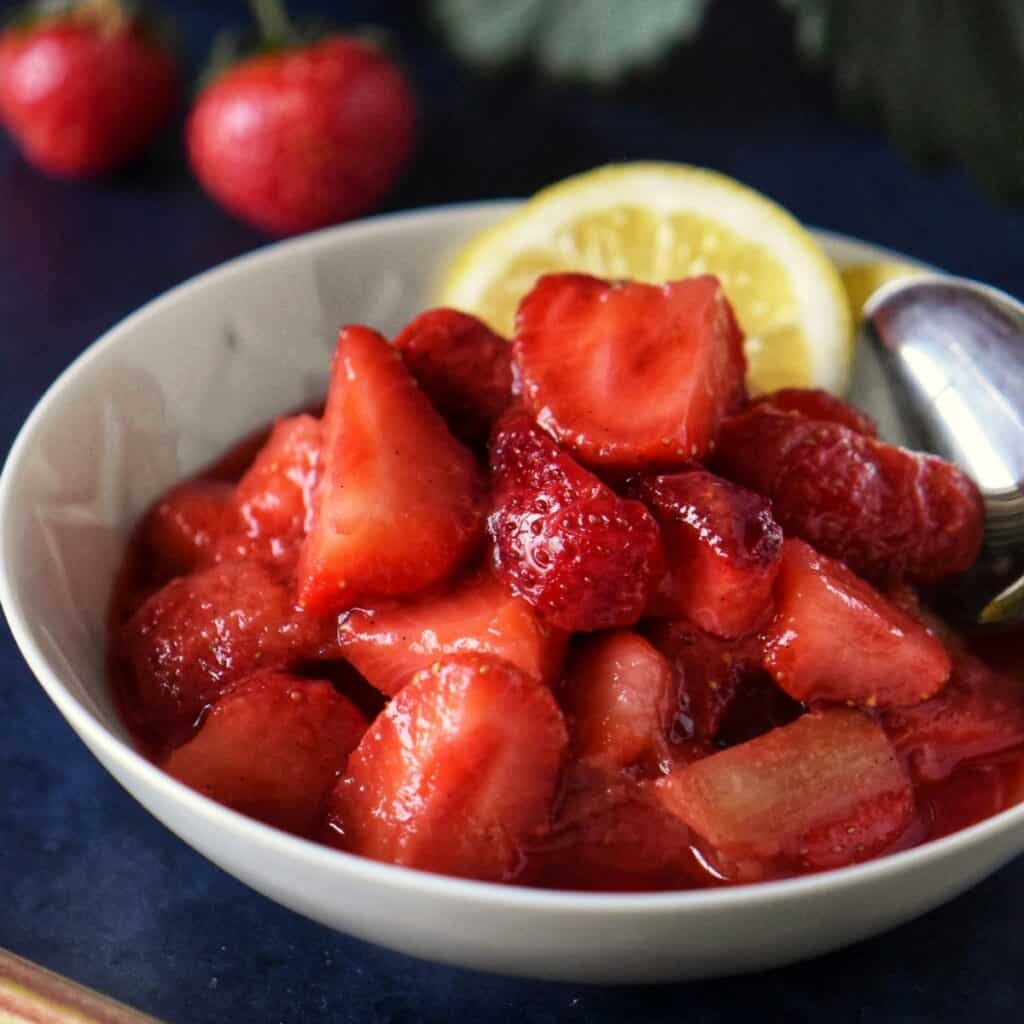
Strawberry Rhubarb Compote
This strawberry rhubarb compote is the perfect topping for yogurt, biscuits, or pancakes. The strawberries’ sweetness balances the rhubarb’s tartness, creating a perfect combination of flavors.
Get ready to embrace the tangy goodness and elevate your culinary adventures with this versatile spring vegetable. Start your day with delicious rhubarb muffins, perfect for breakfast or snacks. Equally delicious is this mouthwatering recipe for rhubarb cake.
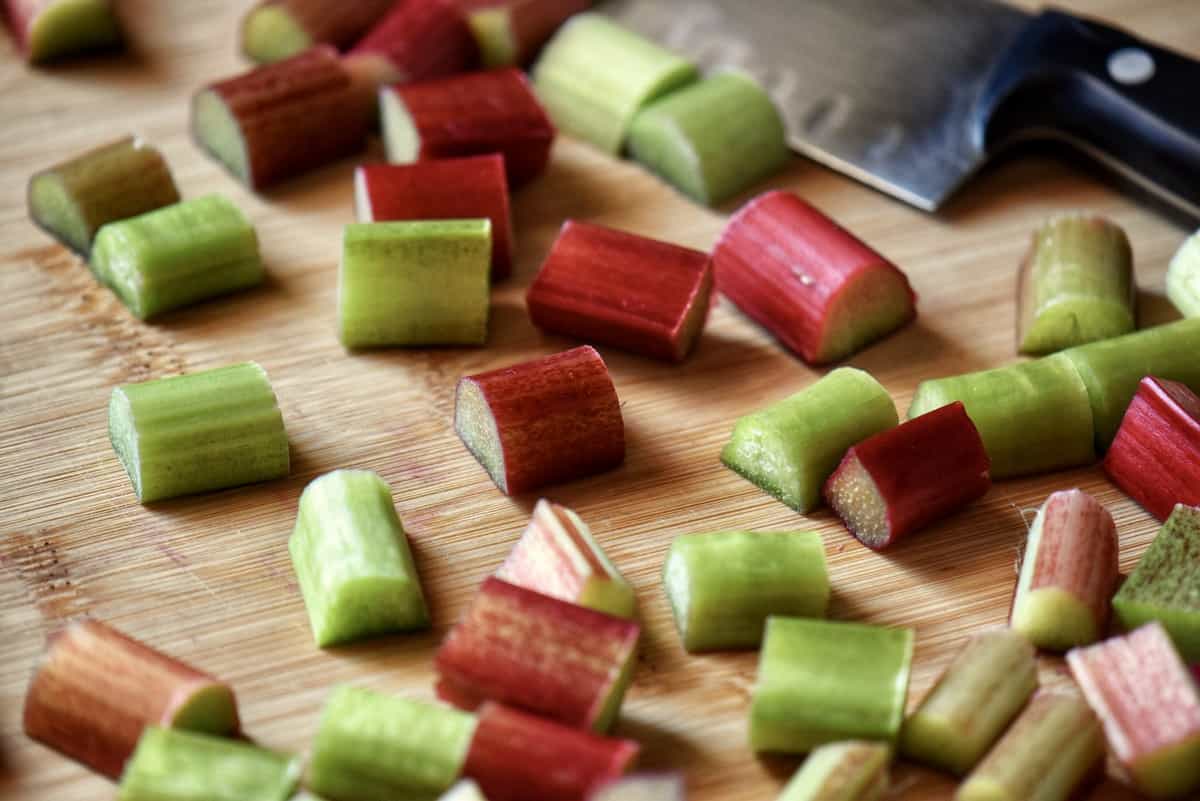
Summary
In summary, freezing rhubarb is not as complex a process as one may think. It all boils down to knowing when the perfect time to harvest is, the quick prepping process in between, and using your rhubarb supply within the allocated one-year window to ensure its freshness.
And for anyone wondering if freezing rhubarb hinders the quality of nutrients, the answer is no. Freezing your rhubarb holds in more nutrients than if you left your rhubarb out for a couple of days!
Since rhubarb is often coupled with strawberries, you may also plan to freeze fresh strawberries. Be sure to consult this step-by-step guide and more in-depth information on how to freeze strawberries.
So if you have ever wondered if you can freeze rhubarb, the answer is yes! Overall, rhubarb freezes well and is an excellent ingredient to make tasty dishes and desserts any time of the year.
Luckily, all you need is a simple step-by-step guide on freezing rhubarb like this one, some fresh rhubarb, and an old-fashioned freezer to make that happen.
Such a great way to enjoy summer produce throughout the year!
Happy freezing!
THANKS SO MUCH for following and being part of the She Loves Biscotti community, where you will find Simple & Tasty Family-Friendly Recipes with an Italian Twist.
Ciao for now,
Maria
Foods preserved by freezing
★★★★★ If you have used this procedure to preserve rhubarb this way, I would love to hear about it in the comments below and be sure to rate the recipe!
Recipe
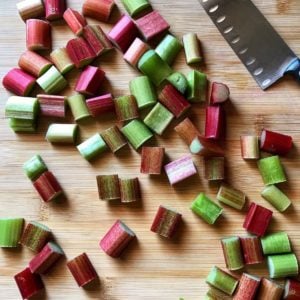
How to Freeze Rhubarb
Ingredients
- 1 bunch rhubarb or as much as you want
- water
Instructions
- Trim the ends and discard any leaves attached to the plant as they are toxic.
- Place the rhubarb in a colander and rinse under cold running water.
- Remove excess moisture with a tea towel.
- Cut the rhubarb into ¾-1 inch pieces.
- Place cut rhubarb on a baking sheet that’s been lined with parchment paper.
- Place the baking sheet in your freezer for about 2-3 hours.
- Transfer the individual partially frozen rhubarb in resealable freezer bags.
- Use a straw or a sealer to remove as much air as possible. This, in turn, will reduce the formation of ice crystals.
- Properly label your bags by indicating the date and place your bag in the freezer.



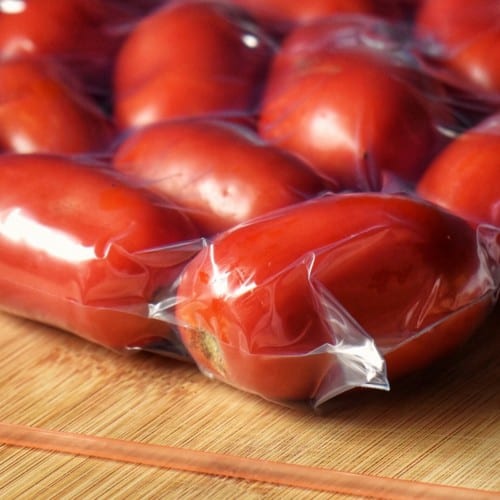
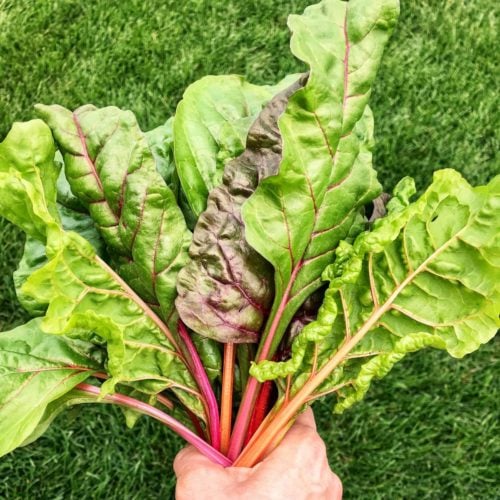


val
This is such a helpful guide! I can’t believe how easy this is! Thanks Maria1
Maria
Thanks Val! I already have a few bags in the freezer… saving them for the winter months.